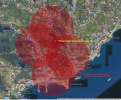Sorry I am late to this party but figured I'd chime in since I don't think your question was really specifically answered. You didn't specify EEA or UK ("Europe" is a geographical term not a political one) so I will give both sets of info. This is all correct, current, and comprehensive to the best of my knowledge.
UK
It should be noted that the rules for the UK are different than the rules for the EU. The UK is much more restrictive than the EU since the UK CAA does not recognize the EASA Class Labels (C0, C1, C2, etc). In the UK everyone needs an Operator ID (even for a Mini since it has a camera). It is easy and quick to get an Operator ID (costs £10). If the drone weighs >250g then you also need a Flyer ID (also easy and quick to get, and the Flyer ID is free. This is comparable to the basic EU
A1/
A3 test). This page breaks down those rules:
https://register-drones.caa.co.uk/drone-code/getting-what-you-need-to-fly
- Note that by CAA rules you are only required to have insurance if the drone weighs more than 20kg or if you are working commercially.
- If your drone weighs <250g (ie, the Mini series only) then you can overfly people. You must have an Operator ID since the drone has a camera.
- If your drone weighs >250g but less than 500g then you can overfly people, but not intentionally and it must be brief. This category comprises I think exclusively of the Spark and original Mavic Air (not 2 or 2S — those are >500g). You must have both an Operator ID and a Flyer ID.
- If your drone weighs over 500g (and up to 25kg) then you must stay >50m away from any uninvolved people at all times and >150m away from any structure. This category includes all of the non-Mini Mavic series drones (including the Air2 and Air2S) and all of the Inspire drones. You must have both an Operator ID and a Flyer ID.
- "Structure" is very broadly defined by the CAA and includes basically everything you can imagine: individual residential buildings, small groups of residential buildings, housing estates, villages, cities and towns, schools, tourist attractions, sports facilities, beaches and parks, theme parks, shopping centres, warehouses, business parks, factories, docks, rail and transport hubs, etc. Source for this list: https://register-drones.caa.co.uk/drone-code/where-you-can-fly
- If you have the A2 CofC certification, which is pretty easy but takes a few days to obtain (all online), you can fly near structures with a drone >250g and <2kg, but you still must maintain 50m separation from uninvolved people (even in low speed mode). Costs about £70.
- This official PDF from the CAA breaks these rules down: https://publicapps.caa.co.uk/docs/33/CAP2012_Drone_Rules_Factsheet_V11.pdf
EEA
Relative to the UK the EEA offers a lot of freedom for us due to the class labeling system. Similar to the UK, everyone flying a drone with a camera in the EU needs a Drone Registration ID number which is quick and easy and costs €30. That is all you need to fly a
Mini 3 since it is Class C0. If flying something heavier than 250g then you also need to take the
A1/
A3 test (very easy and pretty quick – costs an additional €30).
Note for English speakers: you can do all your registrations and certifications with the Irish Aviation Authority (IAA). These FAQ explain the rules more explicitly:
Drones (UAS) | EASA
- Note that by EASA rules you are only required to have insurance if the drone weighs more than 20kg. Some member countries might have a lower limit.
- If your drone weighs <250g or has a C0 class marking (Mini 3) then you can overfly uninvolved people. You must register as a UAS operator.
- If your drone has a C1 class marking (original Mavic 3 and Mavic 3 Classic), then you can fly "close to people" and overfly them, but it must be minimized as much as possible. You must register as a UAS operator and complete the A1/A3 online training.
- If your drone has a C2 class marking (the new Mavic 3 Pro), then you must not overfly people and must maintain a 30m horizontal separation. This reduces to 5m if flying in a low speed mode. Unlike in the UK, however, there is no restriction for flying near structures. You must register as a UAS operator and complete the A1/A3 online training.
- If your drone has no class marking but weighs <2kg (Air2, Air2S, unmarked Mavic 3, unmarked Mavic 3 Classic, unmarked Mavic 3 Pro) then you can fly in the A2 subcategory if you obtain the A2 certification (same content as the UK A2 CofC, but you need to do the EU version which costs about €150). If you do not obtain the A2 certification then you must fly in the A3 subcategory and maintain at least 150m horizontal separation from structures and uninvolved people (same rules as for unmarked drones <25kg). You must register as a UAS operator and complete the A1/A3 online training.
- If your drone has a C3 or C4 class marking (Inspire 3) then the rules are slightly unclear but it is one of the following. You must register as a UAS operator and complete the A1/A3 online training.
- If your drone is not class marked but <25kg (Inspire 2, Inspire 1) then you must maintain 150m from uninvolved people and structures at all times.
RECOMMENDATIONS
Europe is in general pretty densely populated so the only drones that make sense to take to the EEA are the
Mini 3,
Mavic 3 Original, and
Mavic 3 Classic. Note that not all
Mavic 3 and
Mavic 3 Classic drones ship with the C1 sticker so you must ensure that you purchase one with the sticker! The only way to ensure that is to buy the drone in the EU. It is possible to get the C1 sticker for the
Mavic 3 after purchase, but it is a pain. It is not currently possible to obtain the C1 sticker after purchase for the
Mavic 3 Classic. The hassle is worth it for the extra image quality and flyability of the
Mavic 3 versus the
Mini 3.
The C1 class marked original Mavic 3 or Mavic 3 Classic would be my top picks for flights in the EEA.
The UK is also pretty densely populated but I think the same recommendations apply:
Mini 3,
Mavic 3, or
Mavic 3 Classic — with the caveat that if you are flying the one of latter two drones you really do need to get the
A2 certification and you will only be able to fly in cities and towns if there are no people around (ie dawn and dusk in the summertime). In the UK you can fly a
Mavic 3 Pro anywhere that you can fly an original
Mavic 3 or
Mavic 3 Classic, but I would strongly prefer the non-Pro version so that it can also be flown without annoying restrictions in the EU which is right next door! I live in the UK and fly an original
Mavic 3 both here and in the EU.
The original Mavic 3, Mavic 3 Classic, or Mini 3 would be my top picks for flights in the UK.












